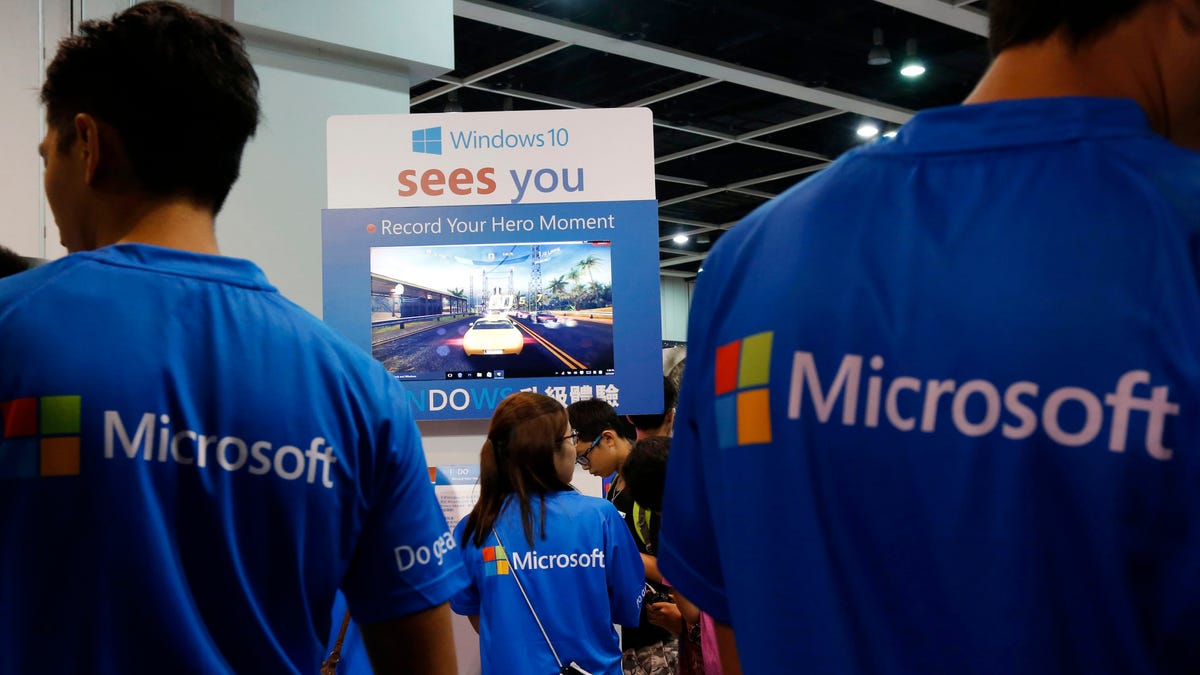
Promotional staff stand at the Microsoft Windows 10 booth two days before its global official launch at the Ani-Com & Games Hong Kong in Hong Kong, China, July 27, 2015. (REUTERS/Bobby Yip)
Windows 10 is an exercise in rectifying the wrongs of Windows 8. That may be the only reason you need to upgrade.
Microsoft is set to release Windows 10 on July 29. That will end an experiment in an operating system that tried to force-feed a touch interface to consumers who — for the most part — had no appetite for it. More specifically, with Windows 8, Microsoft tried to impose its vision of a touch-first ethos that wasn’t very well conceived.
Let me touch on some highlights of what to expect from Windows 10.
Start menu: This is probably the most welcome change. While the Start menu still has the familiar Live Tiles of Windows 8.1, it allows you to reduce the screen-consuming Modern (what Microsoft used to call Metro) touch interface of 8.1 to essentially a pop-up (albeit, wide) menu. And Modern apps can now run as a window on the desktop like any other desktop application. One of the most frustrating design gaffes in 8/8.1 for me is running a Modern Windows app. The app takes over your whole screen by default. While you can arrange Windows apps with Snap, it’s not the same as traditional windowing.
But, wait — Windows 10 gets better. Welcome, the return of the Windows 7 Start, or, at least a key concept of the Windows 7 Start menu. That includes putting drop-dead common sense features like PC on-off on the menu, which is also present on the Windows 8.1 desktop menu, but was added later as an afterthought and not quite as accessible as the new Start.
This brings me back to why Windows 8 seemed so ineffective to so many. Just turning off your PC could be a multi-step, trial-and-error process for the average user not steeped in the intricacies introduced (unnecessarily) into the Windows 8 redesign.
Tablets: Ah, Tablet Mode. While there are shadows of the much-maligned screen that greeted you in Windows 8, Microsoft has done the smart thing by not making this the force-fed mode that burdened all PCs. The redesigned Tablet Mode is set aside for users with a tablet or, for example, a Surface product like Surface 3 or Surface Pro 3. Just detach the keyboard and you’re automatically in Tablet Mode.
Edge Browser: this is the brand-new browser for Windows 10 that replaces Explorer. Its principle virtue is the speed it renders pages.
Microsoft Edge also lets you take notes, write, doodle, and highlight directly on webpages.
Action Center: this is the new way that Windows 10 handles notifications. The Charms bar apparently will be jettisoned from Windows 10. Instead, you will now have the Action Center, which is a bar that appears on the right side of the screen and includes notifications similar to those found on Windows Phone. It also includes Quick Actions such as Wi-Fi or Bluetooth settings that are analogous to Apple’s iOS Control Center.
Windows 10 appears to be good enough to keep the Windows faithful on board and may be even good enough to entice Mac OS X users (like myself) back to Windows. We’ll know for sure Wednesday when the real thing arrives.




















